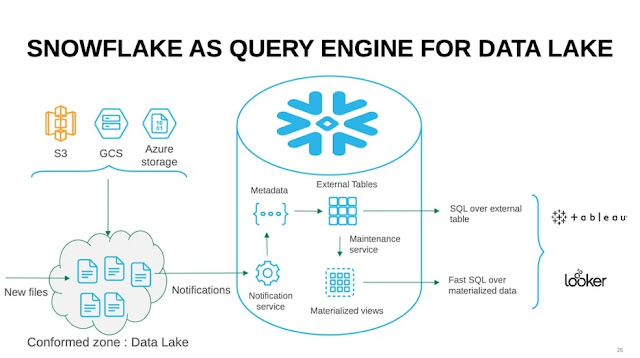What is a Snowflake Data Lake and its Cutting-Edge Features
Data lakes are storage repositories of data where massive volumes can be stored in one place for later processing and analytics. In the past, data storage capabilities consisted of several components like data warehouses, data marts, and more which are now not required due to technological advancements and databases being operated in the cloud.
One of the most highly optimized cloud-based data warehousing solutions providing unlimited storage and computing facilities is the Snowflake data lake. Users can scale up or down in data usage for computing or storing, paying for the resources used only. This is critical for businesses as they do not have to invest in additional hardware or software when faced with a sudden surge in demand.
Data Structure of the Snowflake Data Lake
Snowflake Data Lake has an extendable architecture that ensures seamless loading of databases within the same cloud environment, thereby doing away with the need to choose a specific data warehouse or a data lake to operate on. For example, consider the data generated via Kafka. It can be transferred to a cloud bucket, converted to a columnar format with Apache Spark directly, and loaded to the conformed data zone. Businesses, therefore, do not have to choose between a data lake or a data warehouse.
Further, the ability of Snowflake Data Lake to load native data helps in cutting-edge analysis of mixed data formats and greatly increases its efficiency.
Features of Snowflake Data Lake
Several features of Snowflake Data Lake make it the ideal platform for today’s data-driven business ecosystem.
· Scalable features: Snowflake offers fluid and scalable computing resources that are based on the existing volume of data requirements and the number of users. Changes are done automatically without affecting running queries whenever there is a rise or fall in computing requirements. Thus, the compute engine auto-adjusts to the increased flows without a drop in speeds or performance if there is a sudden surge in demand.
· One-point data storage: Structured and semi-structured data such as JSON, CSV, tables, Parquet, or ORC of large volumes are easily and directly ingested into Snowflake data lake without using separate silos for data storage.
· Cost-effective data storage: Snowflake provides highly flexible and affordable data storage. Users have to pay only the base cost for using Microsoft Azure, Amazon S3, and Google Cloud – all Snowflake cloud providers.
· Guaranteed data consistency: Snowflake data lake assures a high level of data consistency ensuring that data can be easily manipulated for cross-database links and multi-statements transactions.
Summing up, Snowflake data lake enables users to have affordable computing and storage facilities together with maximized scaling capabilities. However, DBAs often have to correlate the features of a data lake and Snowflake. It is because though the concept of data lake was introduced long back across business systems, Snowflake Data Lake is a recently-introduced, cloud-based platform.




Comments
Post a Comment